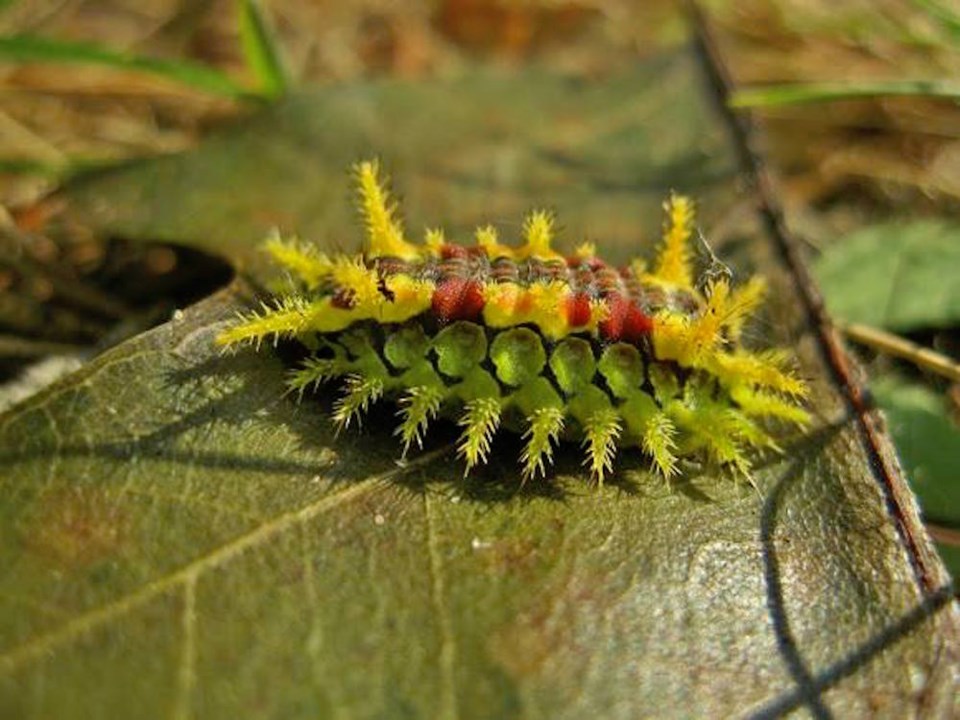Bugs tend to get a lot of people riled up, but there’s not much cause to dread the slow-moving, multi-horned and brightly coloured spiny oak slug, so long as you don’t touch it. Its spines are poisonous and can cause a harsh allergic reaction, which happened recently to a Guelph woman.
Sonja Bray made a post on Facebook a few days ago, complete with a picture of the caterpillar that stung her and gave her a nasty reaction requiring medical attention.
In her post, Bray called the spiny oak slug venomous. She was visiting Guelph Lake earlier this week where she encountered the creepy crawly thing. “I got stung by one and ended up at the hospital,” she wrote in her post. She said she had the stinger removed and was given pain medication to control the burning sensation.
The entire incident may have gone largely unnoticed were it not for the Facebook post and the strong interest in it. As of Friday morning it had been shared by 12,200 people on the social networking site.
According to Cam Linwood, spokesperson for the Grand River Conservation Authority, which runs the Guelph Lake Conservation Area, the spiny oak slug is a fairly common caterpillar species in these parts, and throughout eastern North America. Online sources show its range runs from Florida up into Ontario.
“It is one of many stinging caterpillars,” Linwood said, adding that some who are stung by it get a mild itch, while others have a strong reaction, not unlike other insect bites.
Since the Facebook post was made there have been a small number of calls to the Guelph Lake gatehouse asking about the caterpillar, he said. He added that the University of Guelph Arboretum lists the spiny oak slug as one of its resident caterpillar/moths.
The spiny oak slug comes in a variety of colours, often in a pale green-yellow with red markings on its back. It is quite small, measuring about two centimetres when mature. It eats oak, willow and other deciduous plants, and it has a number of protruding spines that resemble small pine trees.
The critter moves in a kind of gliding manner, much like a slug, as opposed to a crawling movement like most caterpillars.
The spines release a poison that can cause severe reactions in some, so it is important not to handle them. Contact can leave tiny spines in your skin, which can be removed by applying Scotch tape, according to online resources. Ice will reduce the stinging sensation, followed by a baking soda and water paste to control swelling.
Those with a history of asthma, allergy or hay fever, or those experiencing an allergic reaction from contact with the caterpillar, should seek medical attention immediately.
